To make more money from online ads, you need to place them wisely. Google AdSense helps website owners turn their content into cash. This is done by placing ads in smart ways.
Just putting ads on your site isn’t enough. You need to think about how people will interact with them. Good ad placement means happy users and more money for you.
This guide will show you how to get the most from your ads. You’ll learn how to place ads better, keep users happy, and earn more from Google AdSense.
Key Takeaways
- Strategic ad placement directly impacts website revenue
- Balance between user experience and ad visibility is critical
- Machine learning can enhance ad performance
- Mobile optimization is key for maximum earnings
- Regular performance testing leads to ongoing improvement
Understanding AdSense Fundamentals and Revenue Revenue Metrics
Google AdSense lets website owners make money from their content. Success comes from knowing key metrics and placing ads wisely. It turns your site into a money maker by linking you with advertisers.
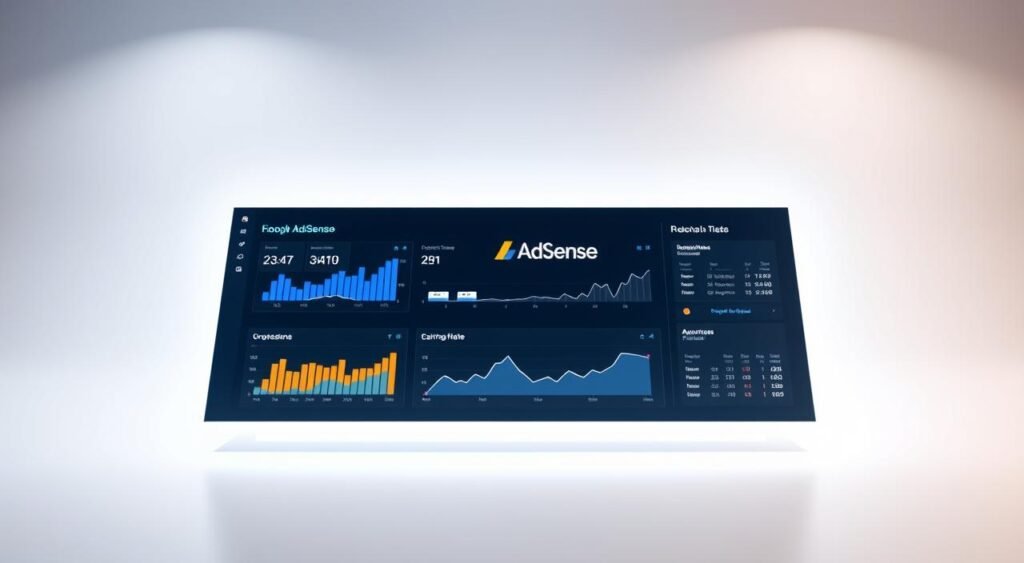
Digital ads need to be precise. Your site’s ability to draw in good ads affects your earnings. Advertisers look at many things when picking ad spots, so it’s key to plan your ad strategy well.
What is Active View CPM and Why It Matters
Active View CPM is a key ad metric. It counts ads that are seen for at least one second. This figure tells advertisers how valuable your ad spots are, which affects your earnings.
Key Metrics for AdSense Success
Knowing about click-through rate (CTR), revenue per mille (RPM), and cost per click (CPC) boosts your earnings. These numbers show how well your ads are doing and how much money you can make.
Basic Requirements for AdSense Implementation
To start making money, your site must follow Google’s rules. You need original content, enough visitors, and follow AdSense policies. Good ad placement can really up your earnings.
Strategic Ad Placement Locations for Maximum Visibility

Choosing the right spots for ads can really boost your ad’s success. Website owners need to pick places that grab attention and make money. The best spots are those that fit naturally with the site, without bothering users.
Ads placed above the fold grab eyes right away. This spot is at the top of your page, visible without scrolling. It’s a prime spot for ads to get noticed and clicked.
Ads within content are also great for keeping users engaged. Placing ads between paragraphs or next to relevant text makes for a smoother experience. This way, users are more likely to interact with your ads.
Sidebar widgets and ads at the end of content are other good spots. They work well when they match your site’s design and purpose. Just make sure not to overdo it to keep your site trustworthy.
Try out different ad spots with A/B testing to find what works best for your site. Every site is different, so what’s good for one might not be for another.
Implementing Auto Ads Technology for Better Performance
Digital publishers are always looking for new ways to improve their ad strategies. Google’s Auto Ads technology is a big step forward. It uses advanced machine learning to help make more money.

Auto Ads changes how websites handle ads. It automatically picks the best places for ads based on your content. This way, ads don’t get in the way of your site’s look and feel, but they can make more money.
Benefits of Machine Learning in Ad Placement
Machine learning makes ad placement smarter. It keeps checking how well your site is doing. This means your site can get better at showing ads that people like and that make money.
Setting Up Auto Ads on Your Website
Setting up Auto Ads is easy. Just log into your Google AdSense account, go to the Auto Ads section, and turn it on. Then, the system will look at your site and suggest the best ad spots.
Customizing Auto Ads Settings
Even with Auto Ads, you can make changes to fit your needs. You can adjust how many ads are shown, where they go, and how they look. This way, you can make sure the ads work well with your site’s design and feel.
Popular AdSense Ad Sizes and Their Effectiveness
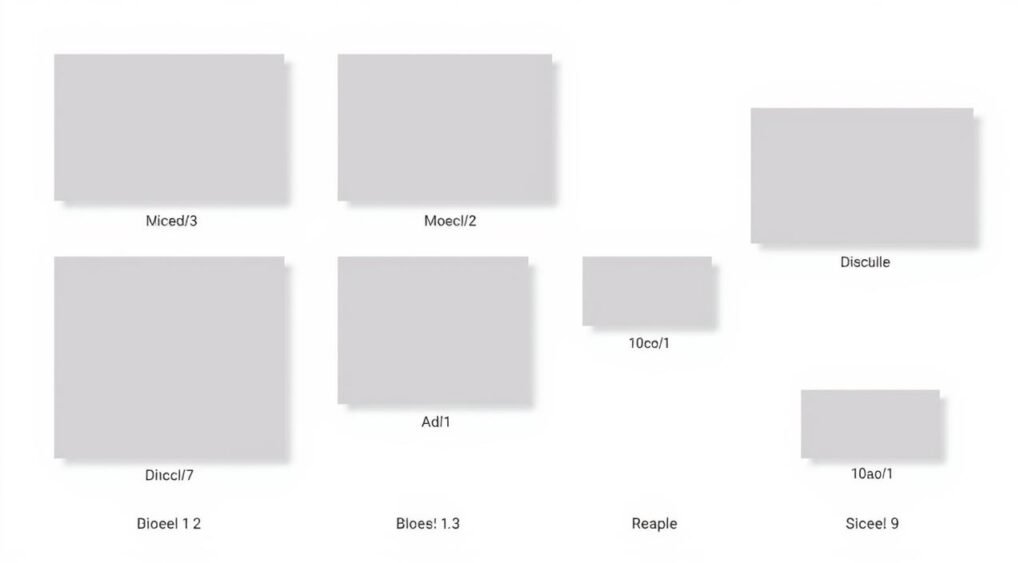
Choosing the right ad sizes can really boost your ad performance. Google AdSense has several standard sizes that work well on websites and mobile devices.
The 300×250 medium rectangle is a top choice. It fits well in content areas and gets lots of clicks. The 336×280 large rectangle also stands out, giving advertisers more space and grabbing user attention.
The 728×90 leaderboard is perfect for websites with horizontal layouts. It’s great at the top of pages or between sections. For mobile users, the 320×100 large mobile banner offers clean, responsive ads on smaller screens.
For websites targeting different audiences, using multiple ad sizes is key. This approach increases competition for ad space. By knowing each size’s strengths, you can balance your ads for the best revenue.
Try out different ad sizes to see what works best for your audience and content. Remember, where and how you place ads is just as important as the size itself.
Optimizing Above-the-Fold Ad Placement
The area above the fold is key in online ads. It affects how users see your site and your earnings. It’s important to place ads wisely without annoying users.
Maximizing Top-of-Page Ad Performance
Ads near the top grab attention fast. Google suggests they be seen but not too much. Your ads should enhance your site’s look, not clutter it.
Balancing Visibility and User Experience
Ads must be placed carefully. Too many can upset users and break Google’s rules. Keep ads few and let content shine. Ads should fit well on all devices.
Your main aim is to serve your audience well and make money. Smart ad placement can do both.
Responsive Ad Units: Maximizing Mobile Revenue
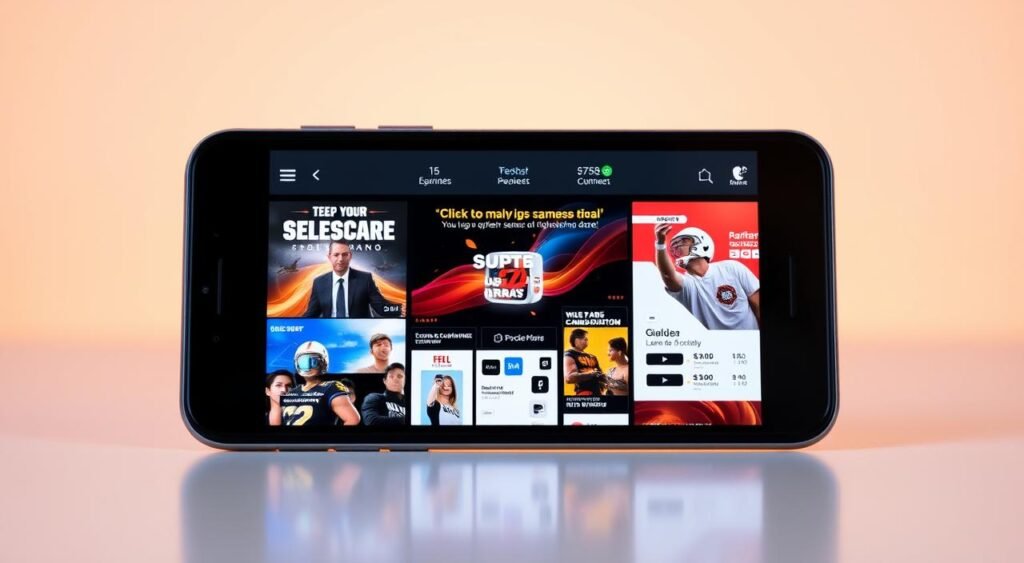
Mobile traffic is now the top choice for online browsing. This makes it key for publishers to focus on digital ad positioning. Responsive ad units have changed the game, allowing for smooth ads on all devices.
These smart ad units change size and look to fit any screen. By using responsive ads, you offer a smooth experience that keeps users engaged and boosts your earnings. Your ads will look great on phones, tablets, or computers.
Your ad strategy should be flexible. Responsive ad units mean you don’t need many ad designs. They adjust size to fit the space, avoiding ugly breaks that upset users and lower clicks.
Responsive ad units bring many benefits. They improve user experience, boost mobile earnings, and make ad management easier. They let you reach more mobile users while keeping your site looking good.
Google AdSense has easy-to-use responsive ad options. Just pick the right sizes, set up your settings, and let the tech handle the rest. It’s a simple way to improve your ad game.
Content Integration Strategies for Higher CTR
Putting banner ads anywhere on your webpage isn’t enough. To boost click-through rates, ads must blend into your content smoothly. Your aim is to make ads that grab attention without interrupting the user’s flow.
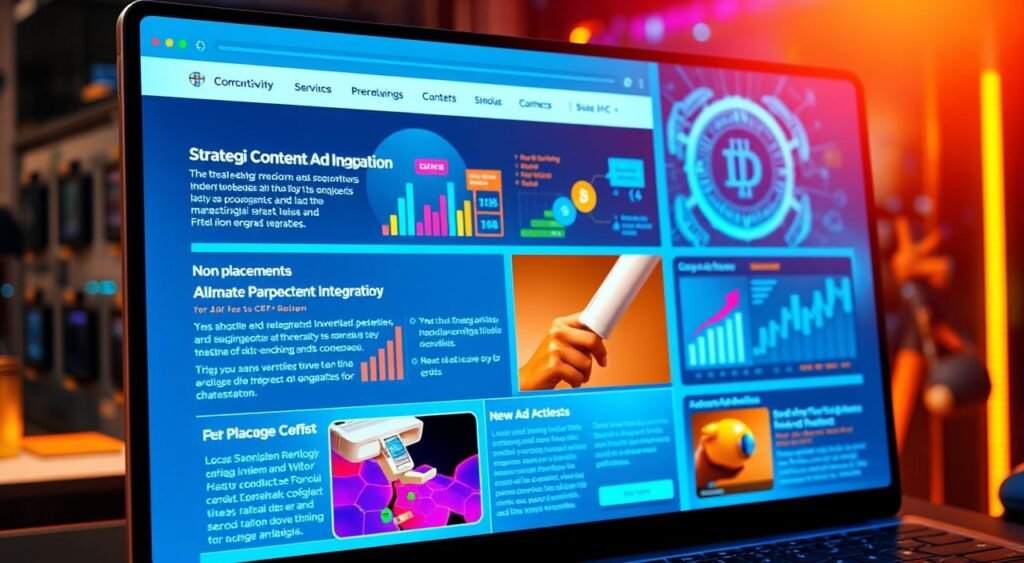
Think about where ads fit best in your content. Place them where they seem like a natural part of the article. This way, ads are less likely to be ignored and more likely to engage users.
In-Content Ad Placement Techniques
Choose ad spots based on content relevance. Ads that match the article’s topic and style get more clicks. Use ads to break up long articles, but don’t overdo it.
Natural Ad Flow Implementation
Match your ads’ design to your website’s look. Use ads that adjust to screen sizes and content layouts. Try different spots to find the best balance between visibility and user experience.
Ad integration is an art. Keep an eye on click-through rates and tweak your strategy as needed. This way, you’ll stay on track with user behavior and engagement.
Site Speed Optimization for Better Ad Performance
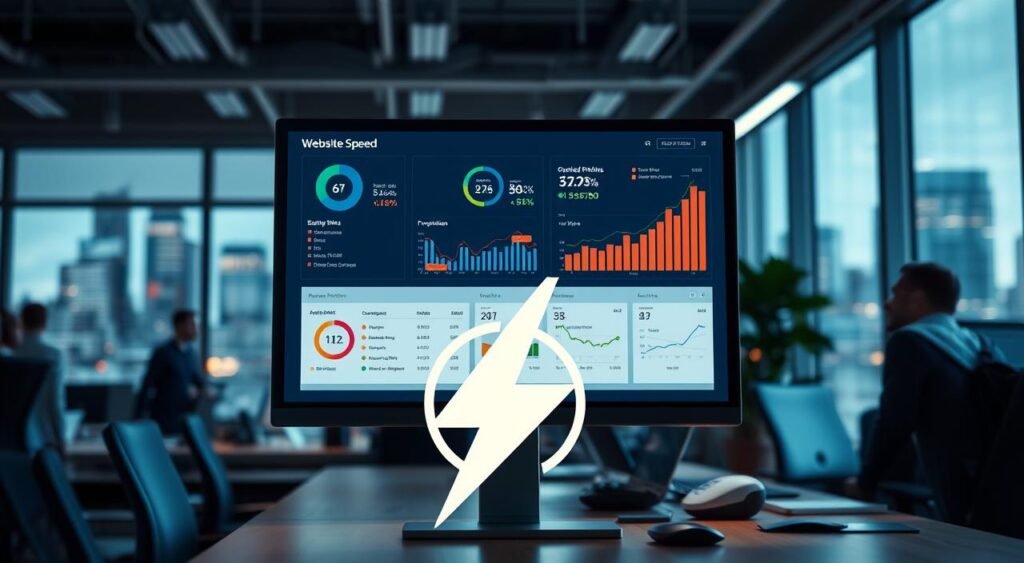
Your website’s speed is key for ad performance. Slow sites can lower ad views and hurt your online ads. Google says aim for under three seconds for the best user and ad experience.
Speed affects how many ads users see. Quick sites get more engagement and views. This means more ad revenue from better visibility and fewer bounces.
To speed up your site, start with image compression and fewer HTTP requests. Google’s PageSpeed Insights can spot slowdowns. Use browser caching, cut server times, and remove slow plugins.
Mobile optimization is vital for ad performance. With more mobile users, fast loading on phones and tablets boosts ads. Responsive design keeps users happy on all devices.
Fast websites improve ads and user experience. They keep visitors longer, increase views, and help your ad strategy succeed.
Ad Placement Testing and Performance Analysis
To boost your AdSense earnings, you need a smart plan for media buying and ad placement. It’s key to test and analyze your ad performance. This helps you understand how to make more money from your website.
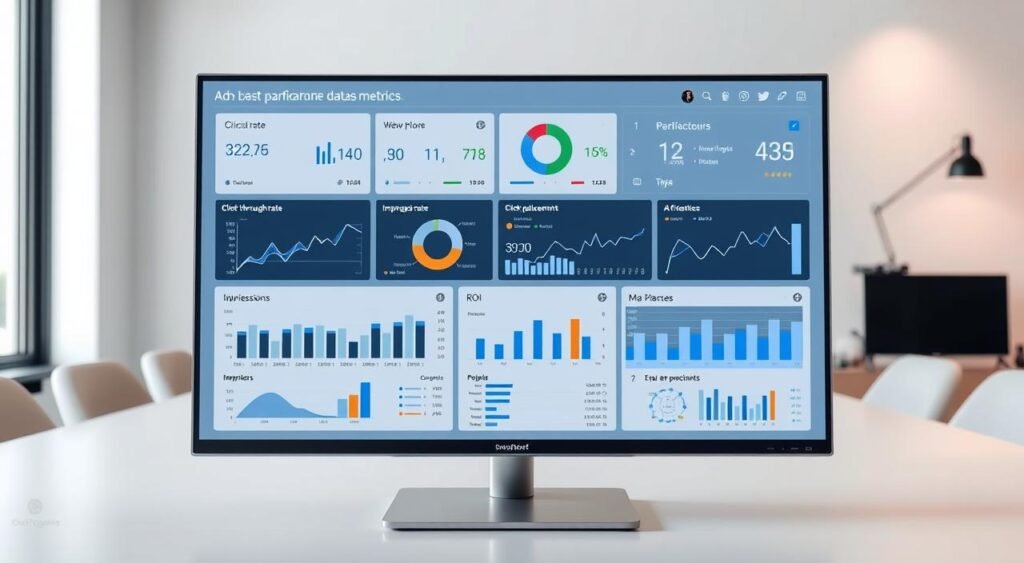
Good decisions come from looking at data. Google AdSense offers tools to track important performance signs. These tools show how your ads do in different places and styles.
A/B Testing Approaches
A/B testing lets you compare ad placements in a scientific way. You make two versions of your page with different ads. This helps find out which ad gets more clicks and makes more money.
Watch metrics like impressions, clicks, and earnings. This helps you decide the best ad placement strategy.
Performance Metric Analysis
Important metrics include click-through rate (CTR), revenue per thousand impressions (RPM), and ad viewability. Use Google Analytics with AdSense reports for deeper insights. See how ad sizes, colors, and spots affect your site’s performance and earnings.
Keep testing and improving your ads. Aim for a balance that boosts revenue without hurting user experience.
Managing Ad Density and User Experience

It’s key to balance ad management with user experience for digital ad success. Your website’s ad strategy can greatly impact your earnings. Studies show that smart ad placement is more important than just adding more ads.
Finding the right ad density is all about knowing your audience and content. Too many ads can annoy users and lose them. But too few ads might not bring in enough money. The goal is to find a balance that keeps users interested and brings in steady income.
Digital ad placement is about quality, not just quantity. Here are some smart strategies:
• Place ads where they fit naturally with your content
• Use ads that adjust to different screen sizes
• Keep an eye on how users interact with your ads
• Change up where ads appear to avoid being ignored
Google’s AdSense rules help keep ads from ruining the user experience. Aim to make ads blend in smoothly with your content. This way, you’ll make a strategy that works for both your users and your profits.
Good ad management means always trying new things and improving. Use data to see how users react to your ads. This helps you make ads better without making your site hard to use.
Advanced Ad Format Selection and Implementation
Digital ads keep getting better, giving publishers new ways to make money. By using advanced ad tech, you can boost your AdSense earnings. This tech makes ads fit well with how users interact with your site.
Finding the right spot for banner ads is tricky. It’s not just about stuffing ads everywhere. Today, publishers aim for the right mix of ads and user interaction.
Exploring Vignette Ad Opportunities
Vignette ads are a new way to advertise online. They show up as full-screen ads between page loads. If done right, they can really increase your earnings.
Developing a Multi-Format Ad Strategy
Success comes from having a mix of ad types. Use anchor ads, vignettes, and regular display ads. This way, you can make more money on both desktop and mobile.
Try out different ad spots, watch how they do, and keep improving. Being open to change and using data can lead to more money in the digital ad world.
Traffic Optimization for Enhanced Ad Revenue
Getting quality traffic to your site is key for a good online ad strategy. You need to draw in the right visitors who like your content and ads.
SEO is vital for making your site more visible. Use the right keywords and create valuable content to attract more visitors. Your goal is to make content that answers questions and offers real value.
Social media is also a great way to get more visitors. Make content that people want to share and visit your site. Sites like Facebook, Twitter, and LinkedIn can help you reach more people and get more ad views.
It’s important to track how visitors interact with your site. Look at time spent on site, pages visited, and bounce rates. Sites with more engagement attract better advertisers and make more money.
Keep your site fresh with regular updates. Use a content calendar to plan your posts. Content that stays relevant can keep bringing in visitors and ad revenue for a long time.
By using these strategies, you can turn your site into a traffic magnet. This will help you make more money from ads and increase your AdSense earnings.
Ad Blocking and Filtering Strategies
Digital publishers face big challenges with ad blocking. It can hurt their revenue a lot. It’s key to use smart filtering to keep ads running well.
Ad blocking software is getting more popular. Millions of users worldwide block ads. This makes publishers work hard to keep ads and make money.
Smart Filtering Techniques
Smart filtering needs a careful plan. Use AdSense tools to block bad ads. Make sure you don’t block too many ads.
Maintaining High-Quality Advertiser Relationships
Keep your ads quality high by being picky. Use filters to block ads that might upset users. Check your ad network often to find and fix problems.
Managing ad blocking well can make your site better for users and keep your money coming in. Stay open to changing your strategy as needed.
Compliance and Policy Guidelines
Understanding Google AdSense policies is key for a successful online ad strategy. Your site’s ad performance depends on following these rules closely. Knowing these guidelines helps you earn money while keeping your site safe.
Google’s AdSense Program asks publishers to have high-quality content and place ads wisely. The Ad Experience Report is important for spotting policy problems. It helps you fix any issues that could hurt your ad earnings.
Important areas to focus on include content quality, ad placement, and user experience. Don’t put ads on pages with little content or use tricks that might get you warnings. Your aim is to make ads enhance your site’s value without bothering visitors.
The Better Ads Standards give more advice on good advertising. By following these tips, you can improve your ad strategy and keep users happy. This not only keeps your AdSense account safe but also keeps readers coming back.
It’s vital to keep an eye on policy changes and manage your ads well. Stay up-to-date with Google’s rules, use best practices, and always work on making your ads and content better.
Conclusion
Your journey to better AdSense optimization starts with smart ad placement. It’s not just about putting ads; it’s about making the user experience smooth. This balance is key to making money from your website.
For successful ad placement, keep learning and trying new things. Watch your ad performance, test different ad types, and listen to what users say. Remember, making your website better is an ongoing effort. Your hard work in improving ad placement will pay off.
Always keep the user in mind. While making money from ads is important, keeping your site user-friendly is even more so. Use the tips from this guide to make ads that work well for both you and your visitors.
The digital ad world is always changing. Keep up with new AdSense updates, make choices based on data, and keep learning. Your effort to master ad placement will help you stand out in the online world.
